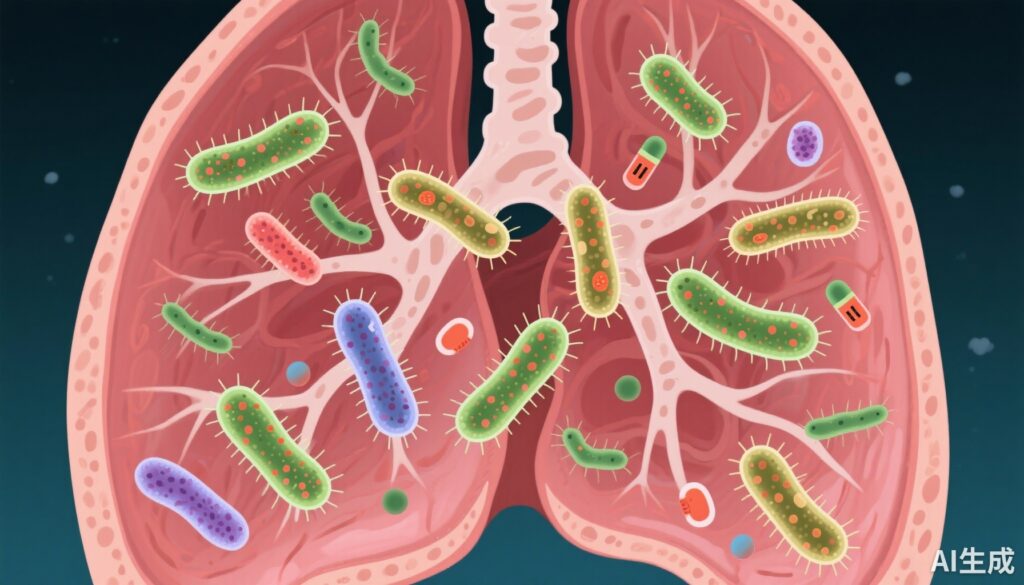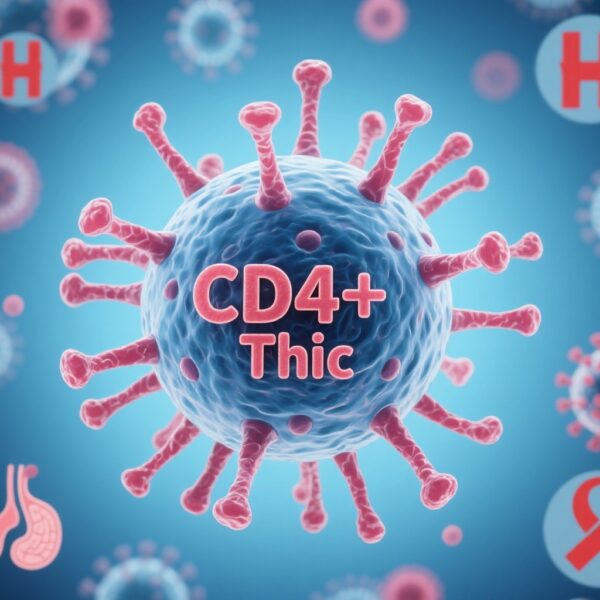Highlight
- Mixed infections were identified in 10.8% of multidrug-resistant tuberculosis (MDR-TB) patients in Shanghai, demonstrating significant strain diversity within individual hosts.
- Heteroresistance, indicating coexistence of drug-susceptible and drug-resistant bacterial populations, was observed in 16.5% of patients, more frequently involving second-line anti-TB drugs.
- Older age, diabetes, and presence of mixed infections were significant risk factors for heteroresistance.
- Mixed infections and heteroresistance substantially contributed to discrepancies between phenotypic and genotypic drug susceptibility testing, posing challenges to MDR-TB diagnosis and treatment.
Study Background
Multidrug-resistant tuberculosis continues to be a major global public health challenge, particularly in high-burden countries such as China. The presence of multiple Mycobacterium tuberculosis (M. tuberculosis) strains within a single patient — referred to as mixed infections — and the occurrence of heteroresistance, where genetically resistant and susceptible bacterial populations coexist, further complicate effective diagnosis and management. These phenomena can obscure conventional drug susceptibility testing (DST) results, hinder appropriate treatment selection, and potentially facilitate ongoing transmission of resistant strains. Understanding the epidemiology and clinical implications of mixed infections and heteroresistance is critical to optimize MDR-TB control strategies.
Study Design
This population-based genomic epidemiology study analyzed MDR-TB cases diagnosed in Shanghai, China, from January 1, 2005, through December 31, 2018. The study cohort included 936 patients confirmed to have MDR-TB. Comprehensive demographic, clinical, and laboratory data were collected, including phenotypic and genotypic DST results. Whole-genome sequencing (WGS) of M. tuberculosis isolates was performed to detect the presence of multiple strains per patient (mixed infections) and to characterize heteroresistance through identification of minority resistance-conferring mutations. Multivariable logistic regression models were employed to identify factors independently associated with mixed infections and heteroresistance. The impact of these conditions on DST discrepancies and implications for treatment outcomes were also evaluated.
Key Findings
Among the MDR-TB cohort, 10.8% (101/936) exhibited mixed infection, indicating concurrent infection with genetically distinct M. tuberculosis strains. Heteroresistance was found in 16.5% (154/936) of cases, with a higher incidence involving resistance to second-line anti-TB drugs compared to first-line drugs (P < 0.01).
Older patients aged 60 years or above had an increased adjusted odds ratio (aOR) of 1.91 (95% CI: 1.02–3.57) for heteroresistance. Similarly, diabetes mellitus emerged as a significant risk factor (aOR 2.59, 95% CI: 1.36–4.91). Notably, mixed infections were strongly associated with heteroresistance (aOR 2.85, 95% CI: 1.67–4.88), underscoring the complex microbial dynamics within hosts.
About 22.6% (58/257) of strains with inconsistencies between phenotypic and genotypic DST could be attributed to mixed infections and heteroresistance. Particularly, strains exhibiting heteroresistance to ethambutol (EMB) had a significantly higher discordance rate between phenotypic and genotypic results compared with those without heteroresistance (29.1% vs. 17.2%, P < 0.05).
Importantly, isolates phenotypically susceptible but genotypically resistant harbored minority or low-frequency resistance mutations, which were more likely in patients with mixed infections and heteroresistance. These low-abundance resistant populations can evade detection by standard culture-based DST, leading to underestimation of drug resistance and potential treatment failure.
Expert Commentary
This study offers compelling genomic evidence that mixed infections and heteroresistance contribute significantly to the complexity of MDR-TB diagnosis and management in endemic settings. The identification of minority resistant variants calls for more sensitive molecular diagnostic tools capable of capturing heterogenous bacterial populations. Additionally, the association between diabetes and heteroresistance highlights the need for integrated management of comorbidities in TB patients.
However, the study is observational and limited to a single metropolitan area; thus, generalizability to other regions requires caution. Further prospective studies linking mixed infections and heteroresistance with clinical treatment outcomes would deepen understanding of their prognostic significance. Current WHO guidelines do not specifically address the impact of heteroresistance, which warrants consideration in future updates.
Conclusion
Mixed infections and heteroresistance are prevalent among MDR-TB patients in Shanghai, posing challenges for accurate drug resistance detection and effective treatment. Their presence accounts for considerable discordance between phenotypic and genotypic DST results, particularly for second-line drugs such as ethambutol. Clinicians and microbiology laboratories should be aware of these phenomena when interpreting DST and designing treatment regimens. Enhanced diagnostic approaches, including deep sequencing and individualized therapeutics, are essential to address the evolving complexity of MDR-TB and improve patient outcomes.
Funding and ClinicalTrials.gov
The original study was supported by national and institutional grants as detailed in the referenced publication. There was no mention of a registered clinical trial number related to this epidemiological study.
References
Liu Y, Zhang Y, Lu X, Wu Z, Li M, Zhang R, Lu Y, Hou R, Ji Y, Zhang Q, Jiang Q, Li J, Jiang Y, Wang Y, Yuan J, Takiff HE, Chen X, Shen X, Yang C. Mixed infections and heteroresistance of Mycobacterium tuberculosis among multidrug-resistant tuberculosis in China: a genomic epidemiology study. Emerg Microbes Infect. 2025 Dec;14(1):2534656. doi:10.1080/22221751.2025.2534656. Epub 2025 Aug 1. PMID: 40748858; PMCID: PMC12320256.
World Health Organization. WHO consolidated guidelines on drug-resistant tuberculosis treatment. 2020 update. Geneva: WHO; 2020.
Meehan CJ, Goig GA, Kohl TA, et al. Whole genome sequencing of Mycobacterium tuberculosis: current standards and open issues. Nat Rev Microbiol. 2019;17(9):533-545. doi:10.1038/s41579-019-0214-5.


